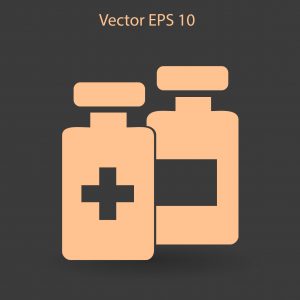I. Introduction

Substance abuse has emerged as a pervasive issue that affects millions of individuals and their families, necessitating comprehensive approaches to treatment and recovery. The gravity of this issue is particularly evident in the context of Alcohol Use Disorder (AUD), which constitutes a significant public health concern. According to a 2016 survey, approximately 15.1 million people aged 12 and older were diagnosed with AUD, highlighting the urgent need for effective interventions to combat this alarming trend (Roeber et al., 2018). Among the various methods available for addressing AUD, one of the notable frameworks that have gained prominence in supporting recovery is the 12 Steps of Alcoholics Anonymous (AA). This structured program not only emphasizes personal accountability but also fosters community support, both of which are essential for individuals striving to overcome the challenges of addiction. However, the success of such recovery programs often hinges on the commitment to ongoing treatment and adherence to a structured care regimen. It is crucial to recognize that creating supportive continuing care programs plays a vital role in increasing attendance and facilitating long-term sobriety, which remains a significant hurdle for many (Foote et al., 2014). Understanding these dynamics is critical, as it underscores the importance of integrating the 12 Steps into broader therapeutic practices for individuals grappling with substance abuse. By adopting a more holistic approach, treatment providers can better support those in recovery, ultimately leading to improved outcomes and healthier futures for individuals affected by AUD and their loved ones, fostering a stronger network of recovery communities that promote healing and resilience.
Please also review AIHCP’s Substance Abuse Specialist Program and see if it meets your academic and professional means in working with those facing addiction.
A. Definition of substance abuse
Substance abuse, often characterized by a compulsive and chronic pattern of using drugs or alcohol despite experiencing numerous detrimental consequences, poses significant and multifaceted challenges to both individual health and societal well-being. The definition of substance abuse encompasses a wide range of behaviors that may include, but are not limited to, increased tolerance to substances, the presence of withdrawal symptoms, and a notable neglect of personal and professional responsibilities. Collectively, these behaviors serve as critical indicators of a substance use disorder, which can have devastating effects on an individual’s physical and mental health. As highlighted by a 2016 survey from the Substance Abuse and Mental Health Services Administration (SAMHSA), approximately 15.1 million individuals aged 12 and older in the United States struggled with alcohol use disorder, yet alarmingly, only about 10.6 percent of this population received the necessary treatment for their condition (Roeber et al., 2018). This troubling statistic underscores the pervasive underutilization of available recovery resources, such as the widely recognized 12-Step program offered by Alcoholics Anonymous (AA), which has helped many individuals reclaim their lives. Furthermore, past research indicates that individuals engaged in these recovery efforts often exercise agency in their recovery journeys, suggesting that substance abuse and recovery are profoundly interconnected social constructs that reflect broader societal issues. Understanding these dynamics is crucial, as it helps to address the stigma surrounding substance abuse and emphasizes the importance of accessible support systems for those in need of help (Duff-Gordon et al., 2020).
B. Overview of Alcoholics Anonymous (AA)
Alcoholics Anonymous (AA) has long been seen as a cornerstone in the fight against alcohol dependence, offering a setting where folks come together to beat the habit. Started way back in the 1930s, AA is wedded to the idea that sharing personal stories and mutual support really helps people stay on track—group interactions, after all, often make all the difference. Members are usually invited to try out the twelve steps, a kind of hands-on guide that pushes them to reflect on their choices and take responsibility, which many believe builds real resilience against slipping back into old ways. This down-to-earth, grassroots vibe generally matches up with research that views substance misuse as a chronic issue needing a mix of treatments, including ongoing support and active participation in recovery circles (Foote et al., 2014). Everyday challenges—like keeping up with regular meetings and staying engaged in continued care programs—only underline just how essential AA’s community-driven approach is for anyone struggling to navigate their sober path (Christy A Visher et al., 2008).
C. Importance of the 12 Steps in recovery
AA’s 12 Steps give a practical roadmap for folks trying to break free from substance abuse—a journey that aims not only for sobriety but also sparks a kind of genuine self discovery. Instead of following a strict regimen, the process is broken into bite-sized parts that build personal responsibility and encourage inner growth; many view these elements as key drivers for lasting change. Community and mutual support play a big role too, often boosting motivation and helping people stick with recovery plans, even when things get messy. Research generally shows that when recovery programs weave in these steps, rates of staying substance-free tend to climb over time (Foote et al., 2014). Some studies even hint that mixing in spiritual or religious practices correlates with better outcomes, with stronger spiritual ties linking to more active involvement in the 12-Step process (Andrade et al., 2012). All in all, these various pieces point to the many layers through which the 12 Steps help pave a sustainable path away from substance abuse.
II. Understanding Substance Abuse

Understanding substance abuse is key—it’s not just a checklist of symptoms or isolated issues. Take, for example, approaches like AA’s Twelve Steps; many folks rely on these as a sort of anchor, even though substance use disorders tend to be long-lasting battles that wreck not only a person’s health, but also wreak havoc on family and community ties. Research pretty much shows that good treatment doesn’t happen in one go. It often starts with an intense, sometimes hard-hitting inpatient phase and then gently moves into more everyday support systems meant to keep recovery going. Funny enough, many people find it tough to stick with these ongoing care plans, and this inconsistency is a real stumbling block (Foote et al., 2014). In many cases, studies also point out that substance abuse isn’t the same for everyone; there are noticeable differences between genders, and factors like a history of victimization can really shape how someone improves with treatment (Adams et al., 2012). When you look at it all together, wrapping your head around the messy, intertwined nature of substance abuse is absolutely essential if we’re going to design interventions that actually fit the varied, real-life experiences of those affected.
A. Causes and risk factors of substance abuse
Substance abuse tends to crop up from a jumble of causes—biological, psychological, and social all mixing together. Some people, thanks to their genes, seem to be born with a higher chance of getting into trouble when issues with substances arise; if addiction runs in the family, you often see that risk popping up again. Then there’s the environment—experiencing trauma or not having a good circle of support can really tilt the scales, sometimes making things a lot worse. (Adams et al., 2012) For many women, past victimization and the way they respond to treatment can throw in extra complications. Mental health issues, which can be all tied up with substance use, add even more to the challenge. And then, there’s the role of spirituality—many find that a touch of faith, as seen in programs like Alcoholics Anonymous, usually ends up being a key factor in recovery, with research showing that higher levels of spiritual connection generally lead to better outcomes (Ho et al., 2022).
B. Effects of substance abuse on individuals and society
Substance abuse isn’t an issue that stays locked to one person—it spills over into nearly every part of our lives. Families feel the strain, our economic steadiness gets shaken, and public health services are hit hard; at the same time, people wrestling with addiction frequently see their work output drop, face rising healthcare expenses, and even run into legal troubles. Many individuals caught in this cycle experience these overlapping problems, which only adds extra pressure on community resources. There’s also some interesting evidence—generally speaking, when folks show a deeper spiritual commitment, long-term recovery seems more attainable; studies comparing racial groups in treatment have pointed this way ((Andrade et al., 2012)). Considering that keeping abstinence after treatment is, in most cases, a difficult hurdle (especially during that vulnerable first year (Foote et al., 2014)), it becomes clear that ongoing support programs are absolutely vital for fostering recovery and building resilience both individually and across the community.
C. The cycle of addiction and recovery
Addiction spins people into a hard-to-break cycle—a rough, winding path where each use only deepens the chaos. Often folks find themselves caught in habits that keep them using substances even though the harm is obvious, and this spiral sometimes sends them looking for a lifeline. Many end up gravitating towards AA and its Twelve Steps, a kind of everyday order thrown into the mix to help regain control. Research shows that those getting involved with AA tend to experience noticeable, sometimes even surprising shifts; spiritual practices, for instance, appear to boost recovery and overall wellbeing (Masdeu et al., 2018). Psychodynamic ideas also point out that the support from AA can help people forge new ways to deal with emotions, slowly nipping unhealthy reactions in the bud (Kass et al., 2015). In short, blending personal spiritual leanings with these more traditional insights seems to chip away at addiction’s grip, gradually opening up a more lasting route to recovery.
III. The 12 Steps of AA

The 12 Steps of Alcoholics Anonymous (AA) serve as a foundational framework for individuals seeking recovery from substance abuse, promoting a path of personal accountability and community support that is indispensable in the journey toward sobriety. As participants navigate these carefully structured steps, they actively engage with a discourse that emphasizes the importance of self-reflection and ethical growth, allowing them to construct their identities as empowered agents of recovery rather than as mere subjects caught in the cycle of addiction. This perspective is crucial, not just for individual recovery but also for fostering a healthier society, as it aligns with findings that suggest 12-Step recovery can be more compatible with humanistic values than it has traditionally been perceived, offering robust frameworks for self-care and autonomy ((Duff-Gordon et al., 2020)). Furthermore, ongoing research indicates that religious practices at the outset of treatment correlate positively with increased engagement in the 12 Steps, which effectively fosters a more supportive and collaborative recovery environment across diverse racial groups, potentially enhancing treatment outcomes ((Andrade et al., 2012)). In this broader context, the 12 Steps not only facilitate recovery on an individual level but also cultivate a profound sense of community and purpose that is essential for sustained personal change and collective healing. By fostering connections among participants, these steps provide a platform where shared experiences can pave the way for mutual encouragement, thus reinforcing the idea that recovery is not just a solitary endeavor but a communal journey towards a healthier, addiction-free life. This dynamic interplay between personal responsibility and communal support is at the heart of the transformative potential embodied in the 12 Steps, making them a vital tool in the fight against substance abuse.
A. Historical background of the 12 Steps
The historical roots of the 12 Steps of Alcoholics Anonymous (AA) provide a comprehensive framework for understanding its profound and significant impact on the recovery process for individuals grappling with substance abuse issues. The 12 Steps emerged in the 1930s through the dedicated collaboration of Bill Wilson and Dr. Bob Smith, who envisioned a program that would effectively foster personal accountability, emotional healing, and spiritual growth among those individuals struggling with the debilitating effects of alcoholism. This innovative peer-support model emphasized the importance of shared experiences and mutual understanding, principles that have resonated not only within the confines of AA but have since influenced a wide array of self-help groups across the globe. The evolution of the program also reflects the broader societal shifts occurring during this period, particularly in the changing perceptions of addiction as increasingly recognized as a health issue rather than a mere moral failing. Studies and research have underscored the efficacy of these steps, clearly illustrating their pivotal role as a catalyst for recovery while highlighting the essential nature of community support in maintaining long-term sobriety. This is especially relevant within the context of varying healthcare systems, a point evidenced by robust findings from both the United States and Sweden (Witbrodt et al., 2011). Furthermore, additional evidence indicates that similar structured approaches in Christian-based recovery programs can yield equally positive outcomes across various types of addiction, thereby significantly expanding the versatility and applicability of the 12 Steps well beyond alcohol-related issues alone (Mjolsness et al., 2019). As we delve deeper into the historical context of the 12 Steps, it becomes increasingly clear how this foundational program has shaped the landscape of addiction recovery for countless individuals.
B. Detailed explanation of each step
Alcoholics Anonymous’ Twelve Steps work like a roadmap for tackling substance abuse. They start off by confronting a hard truth—you just don’t have control over alcohol—and then each step kind of adds a new piece to the puzzle, mixing personal effort with a community vibe. Every step isn’t just a tick on a list; it lays down a bit of a foundation that helps you practice these ideas day in and day out. A lot of people say this whole process sparks a journey of self-discovery, sometimes even pushing them toward personal—and, in many cases, spiritual—growth that feels truly transformative. You’ll hear stories in various self-led recovery groups where folks find real meaning and a sense of belonging, even if they sometimes stray from AA’s traditional spiritual framework (Kitzinger et al., 2013). At the end of the day, it’s really the support and fellowship that carry the process, boosting emotional well-being and building up that much-needed resilience against relapse (boyles et al., 2017).
C. The role of spirituality in the 12 Steps
Spirituality really stands at the heart of the AA 12-Step process—many individuals find that inner spark essential when trying to break free from substance abuse. It isn’t so much about sticking to rigid religious dogma as it is about sparking a sense of connection and personal meaning that can be incredibly important during recovery. In most cases, research shows that people who walk into treatment with a strong dose of religious feeling tend to get more involved in the 12-Step work and even offer help by the time they leave ((Andrade et al., 2012)); this seems to point to spiritual engagement boosting overall treatment outcomes. At the same time, this aspect lays down a kind of supportive backdrop that lets folks navigate their struggles while building bonds over shared experiences. Also, addressing the diverse needs of different groups—including the gendered realities some face in AA—is a crucial step toward making the program both more inclusive and effective ((Adams et al., 2012)). In short, spirituality not only deepens an individual’s journey toward recovery but also helps knit together a broader network of support within the 12 Steps.
IV. Effectiveness of the 12 Steps in Recovery

Recovery programs built on the 12 Steps have caught the attention of clinicians and community members alike. Many people, facing persistent struggles with substance use, need treatment plans that are both long-term and multifaceted to help them really stay abstinent. Research generally suggests that structured approaches—like those grounded in the 12 Steps—can improve recovery outcomes considerably, particularly when paired with ongoing support such as the continuing care programs referenced by (Foote et al., 2014). At the same time, the focus on community support in these programs seems to echo findings from interventions aimed at vulnerable groups—for instance, African American women dealing with dual diagnoses—where addressing social and environmental hurdles is key (Amutah et al., 2015). In the end, the 12 Steps not only nurture personal responsibility and even a touch of spiritual growth, but they also build a sturdy framework that underpins long-term recovery within networks of support.
A. Success rates of AA and the 12 Steps
Alcoholics Anonymous (AA) and its famed 12-Step approach help many people burst out of substance abuse, though figuring out its full impact can be pretty tangled. Research generally shows that sticking with AA often boosts long-term sobriety—yet a lot depends on personal drive and having a solid support network. Some studies (cite27) even hint that those who actively participate and drop into meetings on a regular basis tend to do better in their recovery, while missing out can really put a damper on progress. It’s also interesting how substance abuse often intermingles with bigger social issues like homelessness; this seems to point toward the idea that blending the 12 Steps with broader community support might offer a more effective route in most cases (cite28). In a way, piecing together these bits of evidence is pretty crucial for fine-tuning AA’s overall role in tackling substance use disorders.
B. Personal testimonials and case studies
Personal stories and case studies really help us see what the 12 Steps of Alcoholics Anonymous (AA) can do for folks fighting substance abuse. These accounts don’t just offer neat snapshots of individual experiences—they also show the different ways people get involved in the program. Research generally tells us that support groups like AA tend to lead to better outcomes – think less substance use and more sobriety – even though, in most cases, the exact reasons behind these wins aren’t fully spelled out (Kerns et al., 2013). When you dive into particular case studies, you start noticing little differences in how people stick with the program, what drives their motivation, and how they go through personal change, especially when cultural factors are in the mix, as seen in studies on Indigenous populations and even with alternatives like SMART Recovery (Dale et al., 2021). These testimonials add their own flavor to the conversation about AA, showing not only its hurdles but also its real knack for building resilienc and a supportive community among those struggling with addiction.
C. Critiques and limitations of the 12 Steps approach
AA’s 12 Steps have sparked both praise and pushback, especially when you consider how they fit with folks from all walks of life. Some say that leaning so hard on spiritual ideas—and calling on a higher power—doesn’t really click for everyone; for some, it can even throw a wrench into their recovery process. Research, in many cases, points out that the way the Steps are set up might not hit the mark for women in recovery who, for instance, deal with issues like past abuse and ongoing mental health struggles (Adams et al., 2012). There’s also the concern that the program doesn’t come with enough built-in checks to see if it’s working well, which might restrict its adaptability to different needs (Markey et al., 2010). Even though loads of people have really gotten help from the 12 Steps, these gaps suggest that extra or different treatment options could be a necessary addition to cover the full range of substance abuse challenges.
V. Conclusion

Substance abuse recovery and AA’s 12 Steps seem to work together in a rather intricate, yet effective, way for maintaining lasting sobriety. AA has built a solid reputation over time, its community-first support blending nicely with practical approaches for tackling addiction—a real-world touch for a tough problem. Research, generally speaking, hints that factors like a person’s age and even the overall vibe of group sessions can sway how long folks stay in the program; understanding these nuances might just boost engagement for newcomers (Kerns et al., 2013). As society battles rising health disparities, particularly among marginalized communities, AA’s more inclusive approach appears critical in breaking down both emotional and social hurdles (Amutah et al., 2015). All in all, these insights point toward the need for flexible, well-rounded strategies when it comes to treating addiction while underscoring the 12 Steps as a key player in the ongoing struggle against substance abuse.
Please also review AIHCP’s Substance Abuse Counseling Training and see if it meets your academic and professional goals.
A. Summary of key points
Looking at how substance abuse mixes with the Twelve Steps of Alcoholics Anonymous (AA) brings up a bunch of interesting points that show just how the system helps people recover. AA leans hard on the idea of connecting with others—sharing personal stories and experiences—which gives not only emotional relief but also a kind of built-in accountability among its members. You might notice, for instance, that treatment sometimes fails when there isn’t a solid, supportive social network around, which really underscores just how important community really is. It’s also worth mentioning that spirituality—a vital part of these Twelve Steps—generally seems to be linked with higher chances of staying sober. When you combine that spiritual element with the comfort of social support, it can often kick-start recovery paths in a pretty significant way, helping those in the midst of addiction (Christy A Visher et al., 2008). All in all, grasping these interconnected ideas is pretty crucial if we’re going to fine-tune recovery programs and offer the needed help to people getting back into society after overcoming challenges with substance abuse (Christy A Visher et al., 2008).
B. The ongoing relevance of the 12 Steps in modern recovery
Many still find the Twelve Steps valuable because they slip easily into all sorts of treatment settings and spiritual vibes. At their core, these steps are about owning up to mistakes, leaning on community, and growing in spirit—a thought that fits today’s idea of recovery being about the whole person. You’ll see some studies note that simple acts like prayer or meditation can spark a kind of spiritual insight, especially when you get into steps 11 and 12; they kinda blend mind-focused practices with a quest for soul-fulfillment (Goddard et al., 2023). Looking at alcoholism with an eye on moral injury brings out even deeper layers—showing how, in many cases, spirituality and sobriety end up closely wedded (Herik V et al., 2015). Even as treatment ideas shift in subtle ways, the Twelve Steps still offer a sort of essential scaffolding, adapting to modern hurdles in addiction care while hanging on to that core spirit of support and resilience.
C. Future directions for substance abuse treatment and support systems
In today’s shifting landscape for substance abuse support, fresh ideas blend old methods with on-the-ground help. Generally speaking, research keeps hinting that when communities make resources easily available, it really shapes recovery outcomes. People facing substance challenges often need a wide range of support—from the very first treatment step all the way to daily efforts to stay sober (Kithuri et al., 2015). It’s interesting to note that sprinkling in a touch of existential insight can shed light on addiction’s messy, personal side, making treatment feel more connected to both individual experiences and wider social contexts (du Plessis et al., 2019). This mix—having local resources close by and diving into the deeper, sometimes puzzling aspects of addiction—points to a more natural, nuanced approach. Blending these ideas might even boost the effectiveness of the AA 12 Steps in different treatment enviornments
References:
- Kerns, Keesha Masean (2013). Investigating Similarities and Differences as Measured by the DUREL and GSQ Between Three Subgroups Attending a Local AA Meeting to Develop a Profile of Long Term Attendees.
- Amutah, Ndidiamaka, King, Jerome, Leverett, Constance, Mahadevan, et al. (2015). Project THANKS: A Socio-Ecological Framework For An Intervention Involving HIV Positive African American Women With Comorbidities. https://digitalscholarship.unlv.edu/cgi/viewcontent.cgi?article=1239&context=jhdrp
- Foote, Olivia (2014). Continuing care groups: long term treatment of substance use disorders.
- Duff-Gordon, C., Willig, C. (2020). Surrender to Win: Constructions of 12-Step Recovery from Alcoholism and Drug Addiction..
- Roeber, Jena, Schaeffer, Jillian (2018). The 12-Steps of Alcoholics Anonymous: A Guide for Occupational Therapists.
- Adams, Ericka B., Najdowski, Cynthia J., Ullman, Sarah E. (2012). Women, Alcoholics Anonymous, and Related Mutual Aid Groups: Review and Recommendations for Research.
- Ho, Taea F (2022). Understanding Spirituality of Drug-Use Behaviours and Substance Use Disorders.
- Christy A. Visher, Kamala Mallik-Kane (2008). Health and Prisoner Reentry: How Physical, Mental, and Substance Abuse Conditions Shape the Process of Reintegration.
- Kass, Noah (2015). The Philosophies and Practices of Alcoholics Anonymous From a Psychodynamic Perspective.







